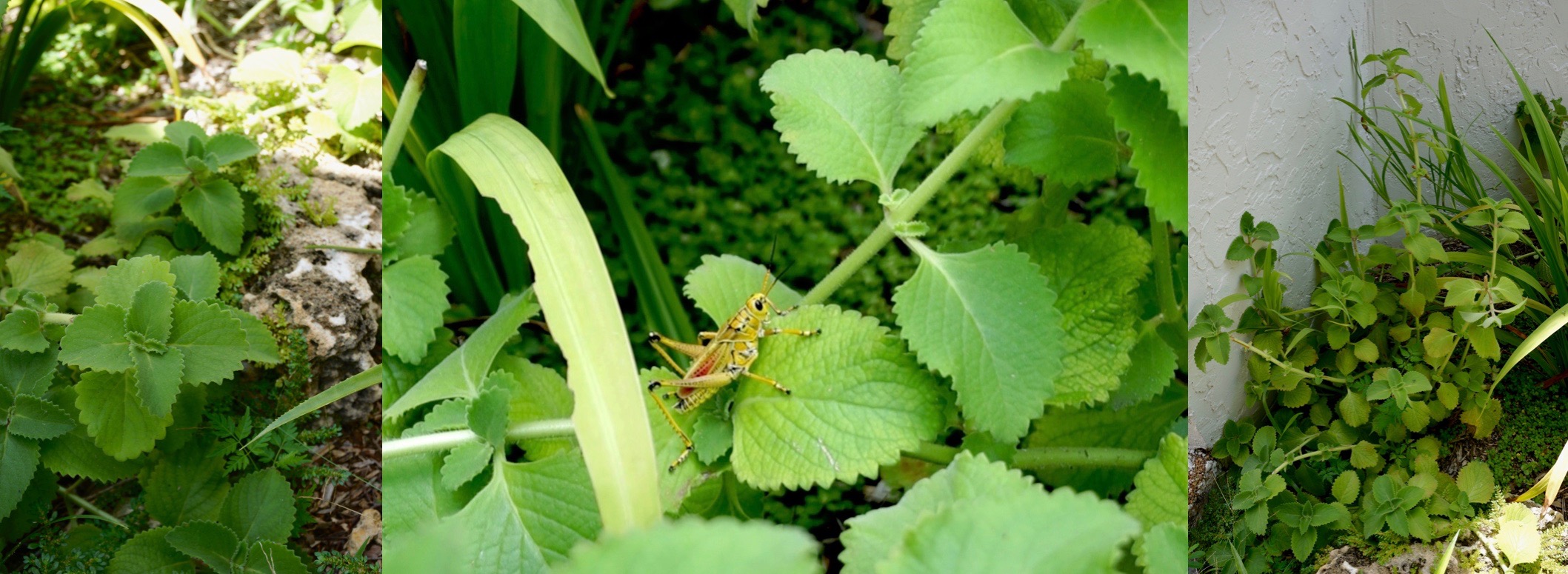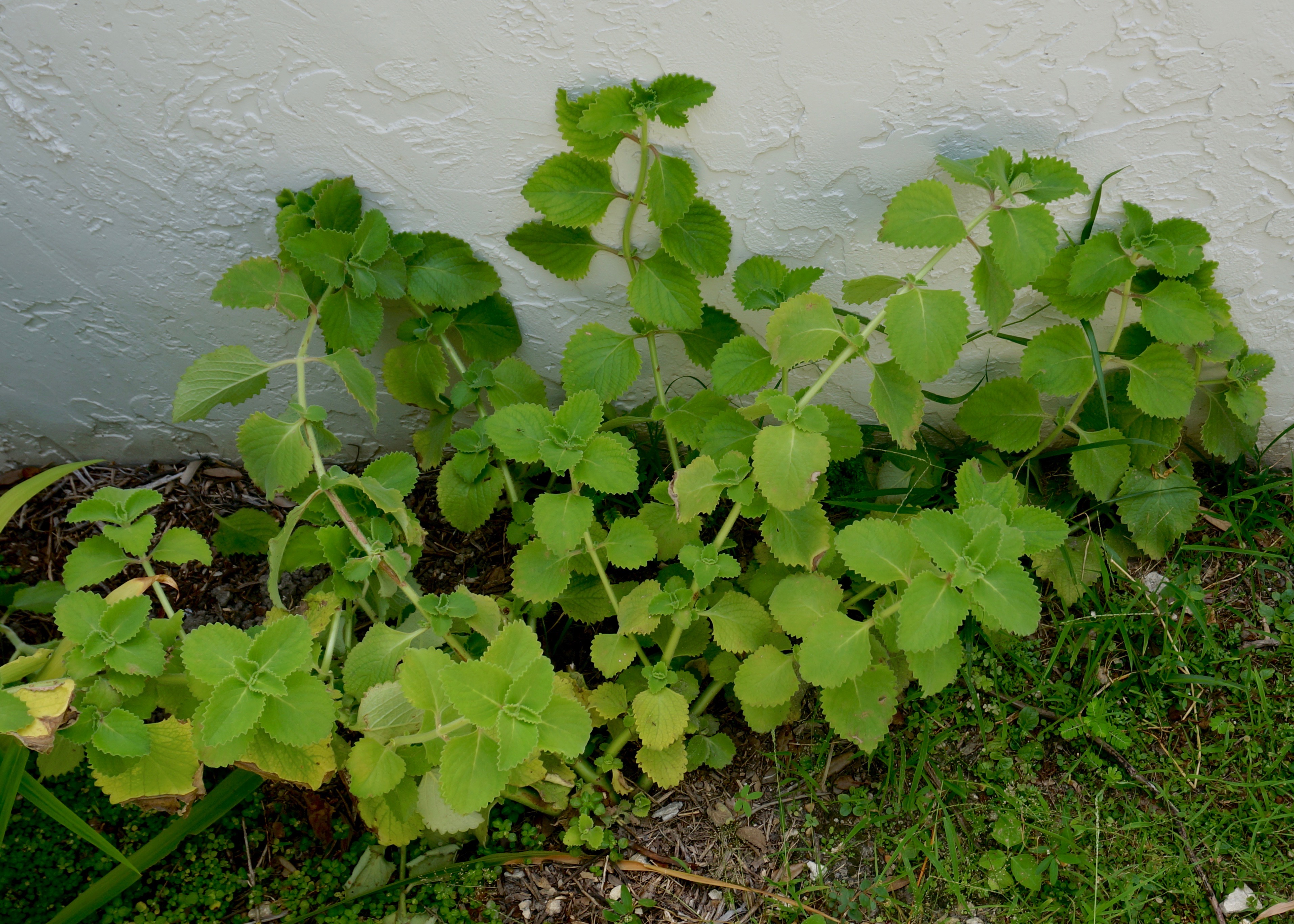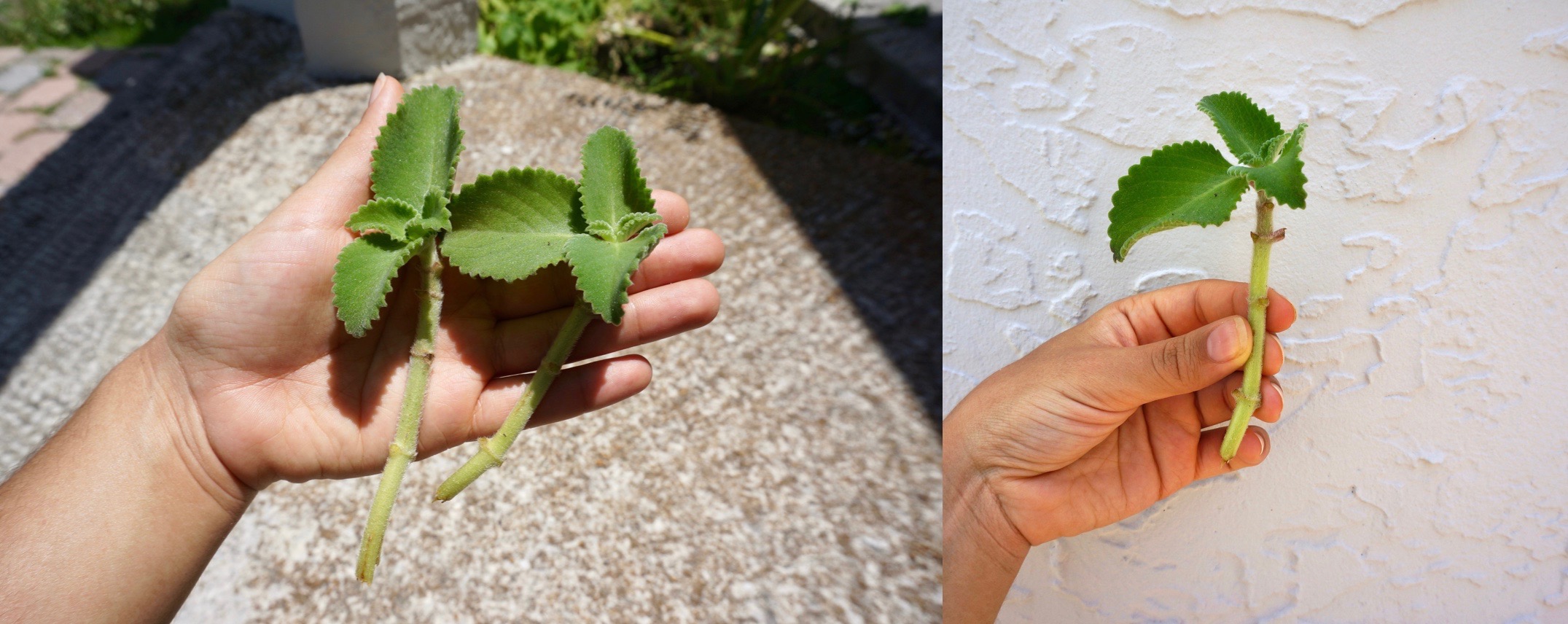All Posts > Herbs > Perennials > Plant Profiles

Introducing the Cuban Oregano
The Cuban Oregano is a shade loving perennial tropical herb that doubles as an ornamental plant. This plant is very easy to grow and pest free, so it is a great choice for beginner gardeners. It is also commonly known as Mexican mint, Spanish thyme, Indian borage, Caribbean oregano, and broadleaf thyme. The species is part of the fragrant Lamiaceae family, which is also known as the mint family. Like many other species it is not completely known where this plant originates. The species has naturalized all throughout the tropics, but it is thought to originate in Southern and Eastern Africa. It was later introduced to other parts of the world during colonial times. Now it is used by people throughout the Americas, Asia, and Africa.

Growth Habit
When the plant is young its growth is upright. As it grows the stems become too heavy and they begin to fall on the ground. This causes the plant to take on a sprawling growth habit. To prevent this, one can tie the stems to a trellis. If it is left to sprawl, the plant will root in places where its stems touch the soil. I believe that over time the plant can potentially grow into a very tall ground cover with a height of around two feet. The entire plant is semi-succulent so both stems and leaves can easily snap. The stems are soft and green, but older stems can eventually become woody. Both the leaves and stems are covered in small hairs that do not pose any irritation.
The Cuban oregano can tolerate heavy shade and actually produces larger leaves when grown in the shade. If grown in full sun, the leaves will only be around 3 inches long but in the shade the length is double that. The plants can produce white, pink, or lavender blossoms but mine have never flowered. The plant is truly tropical and will die with any freezes so in colder regions it best grown in a pot so that it can be overwintered inside. The plant can do well in a pot, but it will grow more vigorously if planted in the ground. In colder regions it can be grown as annual and propagated by cuttings that are overwintered indoors.

Propagation
Propagation of Cuban oregano is normally done through green stem cuttings. Take a tip cutting long enough to contain 2 or 3 nodes and then remove all the leaves except for the ones at the very top. Plant the cutting in soil deep enough to cover all the nodes and the plant should root. Rooting hormone could be used to increase the chances of it rooting, but I have not found this to be necessary. I have tried to root the cutting in water before but it was a complete failure. So, I recommend just planting it directly into soil.
If propagation through stem cuttings is not working then perhaps one can try burying some of the nodes while the stem is still attached to the plant; so that once it roots it can be dug up, cut from the plant, and transplanted. The plant does produce viable seeds, however, stem cuttings are the preferred way of propagation since seed production is not consistent.
Uses
When searching for the uses of an herb, there tends to be more than anyone can count and this is the case with the Cuban oregano. It is used both as a cooking and medicinal herb. The taste and smell is very strong and it is used to replace traditional oregano and sage in recipes. In its raw form it can be too overpowering, so we personally mainly use it to season beans and soups. Despite the taste, my father enjoys eating the leaves whole on crackers as if they were fresh basil leaves. We also boil it in water to make a tea of mild taste that is said to alleviate a cough.
Some people rub the leaves on the skin to repel insects. Cubans use the tea to cure digestive disorders, respiratory problems and arthritis. In parts of Asia the leaves are also believed to improve breast milk production and is given to mothers after giving birth. Whereas in Haiti the leaves are fried so the leaf oil can be extracted to rub onto the chest for treating bronchitis. How well this plant works for these uses is not certain but it doesn’t hurt to try some of these remedies.

Thank you for finding the latin name. I recognize this plant by its Brazilian name: 'boldo'. We used it as a raw vegetable in smoothies, but one should not use it every day for a long period, because then it can cause stomach ache (which indeed happened in our case. But it subsided fast when we stopped using it).
Here in our region in Brasil (subtropical region, 8 months arid, 4 months rain) it is a pioneer plant. Whenever i plant a young tree, I simply put cuttings of this herb around it in the soil. Because they grow fast, up to 3 meters tall, and protect the little trees against the harsh midday sun.
They give blue flowers during the dry season. This helps the hummingbirds to survive when there are no other flowers around.
In a fertile soil the leafs become big. In the arid months they shrink and seem to sleep. Like you wrote, they propagate when you simply put them horizontally on the soil.
Merci de votre réponse. Google travaille bien pour la traduction.
Les poules adorent cette plante. J'en ai fait la douloureuse expérience ! (lol) Merci pour l'article de qualité.
Je ne parle ni le français ni le créole, je suis donc en traduction google. Merci pour la lecture! Je suis heureux que vous ayez apprécié l'article. Je ne savais pas que les poules mangeaient cette plante.
Great video! I'm going to grow some under my trees.
That is a great place. They love the shade.
Thanks for the Cuban oregano propagation info! I just accidentally broke a piece off my plant and needed to know if it would root. If you're interested in tropical food plants, you should take a trip over to ECHO in North Ft. Myers. That place is fantastic!
Thank you for reading! It is great to know that my post was helpful. I also have a video about propagating cuban oregano on my youtube channel. Here is the link https://www.youtube.com/watch?v=jhyPz71ks3g . I have actually been to ECHO. It is a great place and they are doing amazing work.
What’s the best recipe you’ve tried this herb with? And what’s the best environment to grow it in? I live in the desert, could I grow it here?
We mostly just use it to season beans and soups so I would say any recipe like that it would work. It is a tropical plant but you could probably grow it in the desert with some shade, mulch, and a good amount of watering.
Interesting how one plant can go by different names. That's why it's important to know their scientific names.
Yes, it is important but still quite difficult.
Great post profiling this wonderful plant! I've always enjoyed the aroma of Cuban oregano, but I've never known quite what to do with it (I'm more skillful in the garden than in the kitchen, haha). I'm going to try it in beans and soups, as you recommend, thanks for the tip.
As for propagation, someone once told me they'd found they got best results by just laying cuttings on potting soil, and not burying them. I've never tried that, but it might be worth experimenting with.
This is shaping up to be a great blog!
Thank you! Now that I think about it when I have pruned a Cuban oregano and left the cuttings on the ground they do root easily!
That’s very interesting. I think I’ll try growing this plant.
Glad you liked it and good luck!
Thank you very much for this . Thanks for keeping it simple yet thoroughly informative .
Thank you for reading. I am glad you enjoyed it.